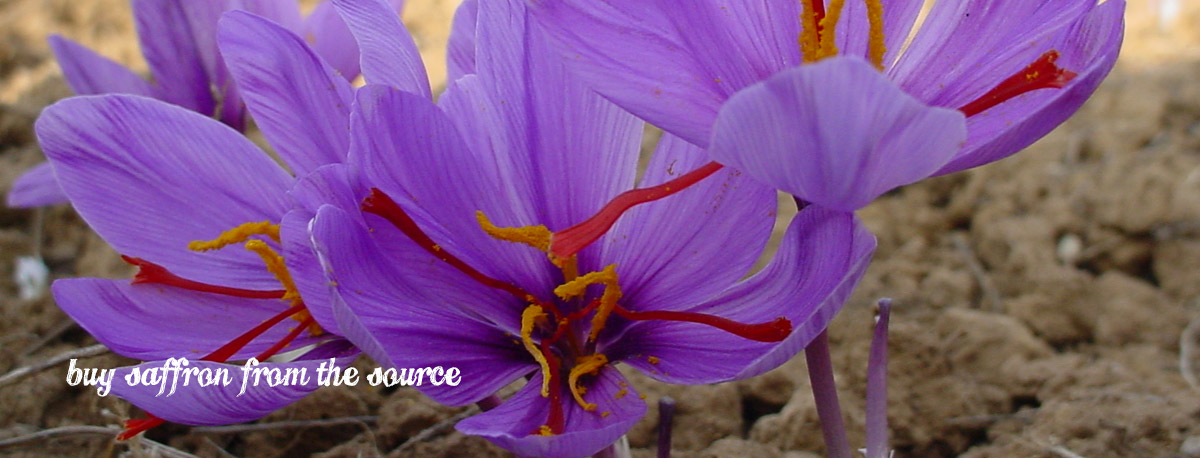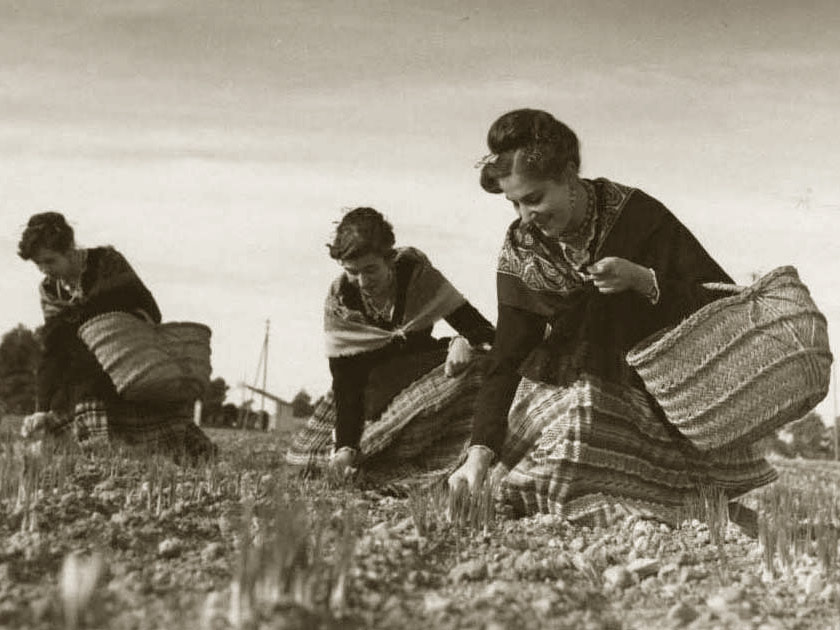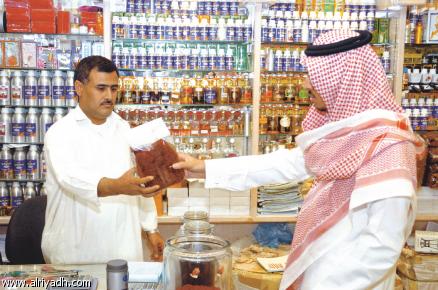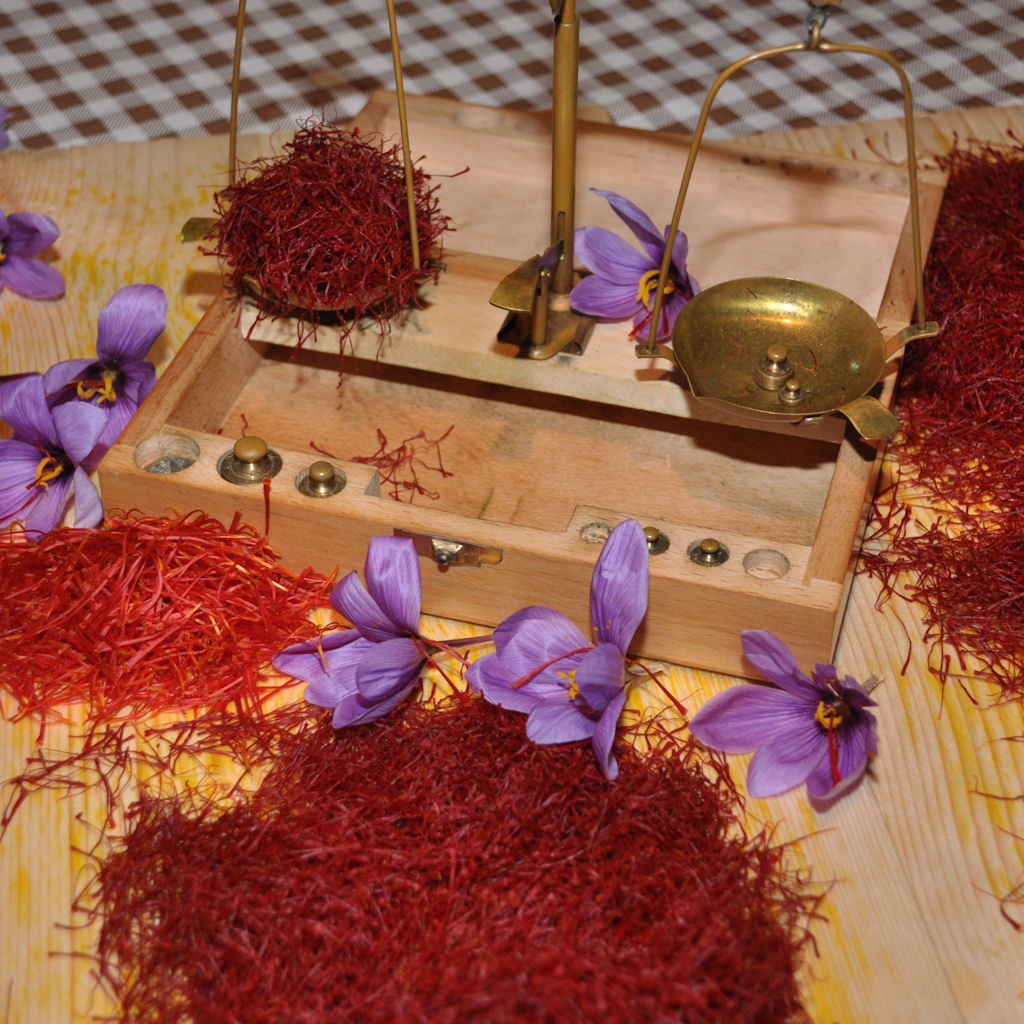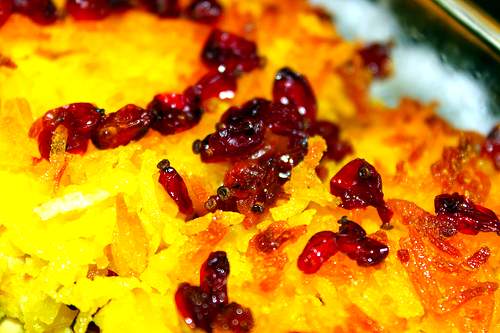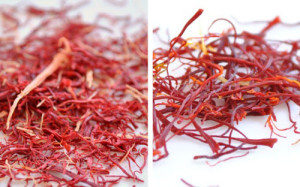Shipment
 Saffron Business makes use of World Renowned shipment companies DHL and TNT for his deliveries world wide. We have long been working with SGS supervision company for exact and clear cut inspection of the goods. For large shipments we use Qatar Airways and Turkish Airlines, from which you may find further information in their websites respectively.
Saffron Business makes use of World Renowned shipment companies DHL and TNT for his deliveries world wide. We have long been working with SGS supervision company for exact and clear cut inspection of the goods. For large shipments we use Qatar Airways and Turkish Airlines, from which you may find further information in their websites respectively.
Instructions on Buying Saffron
Judging Quality
All saffron is not created equal. Like olive oil and maple syrup, saffron also has several varieties. The International Standards Organization (ISO) ranks Grade I saffron as the highest quality for color strength, flavor and fragrance. Like most spices, saffron comes in whole and ground forms, but it is always dried. When packaged in its whole form, saffron looks like a mass of thin, dry threads. High-quality saffron does not contain floral “waste” (non-stigma plant matter) or inorganic debris, and it has low-moisture content.
Key Characteristics
As with choosing fresh produce, looks matter when selecting the best saffron. While smelling and tasting saffron before buying may not be possible through sealed packages, assessing its color can help you determine its quality level. It is important to note that although saffron turns foods a golden color, the spice itself is not yellow. Whether saffron is whole or ground, experts describe its color as dark orange-red, burnt orange, deep reddish-brown or auburn. Ground saffron of lesser quality may be lighter in color, if it also includes the flavorless yellow stamens or if blended with yellow turmeric, a relative of ginger root often found in curry sauces.
Cost of Saffron
Reportedly one of the most expensive spices by weight, each pound of dried saffron can cost more than $5,000, although it is usually sold by the fraction of an ounce. The majority of saffron is exported from Spain, although the spice is also produced in India, Iran and even Pennsylvania Amish communities. The labor-intensive harvesting process must occur in a short time-frame, since the crocus flowers bloom for only a few weeks in October. Growers pick the plant’s purple blooms by hand and remove the stigmas. Producing one pound of saffron requires about 75,000 flowers, and each acre yields about 10 pounds of dried saffron.
Proper Handling
Make the most of an investment in saffron by storing and preparing it correctly. Saffron should be kept in an air-tight container (preferably not in plastic), away from heat and direct light, and the spice may be stored in a freezer for up to two years. For the fullest flavor and longest shelf life, buy whole rather than already ground saffron. Just before using it, finely crush the dry stigmas with a mortar and pestle, and then soak the powder in a small amount of warm water.
26 Things about Saffron
Saffron from A to Z: 26 Things about Saffron
It’s expensive, it’s originally bitter, it comes from the island of Crete, and it’s very tasty
Asia The plant originally came from Asian countries where it is still mainly produced: Iran alone accounts for 90 per cent of the total quantity harvested worldwide.
Bitter To remove its bitter aftertaste, here is a chef’s tip: press the threads between two aluminium sheets before use.
Curry Together with turmeric, coriander, cumin, chilli pepper and other spices, it is one of the star ingredients in this Indian spice mix of worldwide fame. Dishes Among the most well-known dishes containing saffron, French bouillabaisse, pilaf and Asian biryani, Spanish paella and, last but not least, saffron cake from Britain are all experiences not to be missed.
Expensive It takes 80,000 flowers to produce a pound of saffron (453 grams), with a cost in the range of 600 to 2,000 dollars (a pound), prices that make saffron the most expensive spice in the world
Flower Saffron stigmas are gathered when the violet-blue flowers open and every flower produces 3, each one of which is about 25-30 millimeters long.
Greece Some writers claim, however, that it comes from Greece, where it was found for the first time on the Island of Crete during the bronze age.
Harvest Harvest time is autumn, and the process must be carried out by hand, usually by specialized pickers, almost always women, who detach the 3 stigmas one by one.
Indian flag The 3-coloured Indian flag is saffron (to represent Hindus), white (for peace) and green (for growth).
Jingle In the hit song by Donovan entitled “Mellow yellow” the most well-known jingle that everyone sings under their breath is dedicated to this spice: “I’m just mad about Saffron, Saffron’s mad about me”
Kashmir Among the varieties most hard to find on the market is the saffron coming from the Indo-Pakistani area of Kashmir. Here they produce the darkest variety in the world which tends towards a purple-brown color, called Mongra or Lacha.
La Mancha During harvesting, on the Spanish plain of La Mancha it is customary to burn some stigmas on a low fire to diffuse the spicy aroma of saffron in the air.
Make up Owing to its coloring properties, in ancient times it was used as a cosmetic, as well as for dyeing fabric and leather.
Nuremberg In the Middle Ages in Nuremberg, whoever adulterated saffron with the addition of less precious ingredients, was burnt alive.
Opium To combat drug trafficking, in Afghanistan a project has been set up to replace illegal opium poppy plantations with saffron.
Properties A natural medicinal, it has been used since time immemorial for its antibacterial and antiviral properties, and is excellent for treating stomach-ache, coughs and bronchitis.
Qualities There are international norms (ISO) which define its qualities, dividing saffron into 4 different categories according to its color, aroma and taste.
Risotto The most famous dish in the world is saffron risotto, using stock made from bowling fowl, which comes from the Italian city of Milan and is known worldwide.
Sunrise The stigmas of Crocus sativus (the Latin name for saffron) are only picked at dawn, before its flowers open, in order to preserve its aroma and properties.
Taster On a par with sommeliers and cheese tasters, saffron too has its specialists, who decree which varieties are the best.
Unusual habits The main ingredient of magic potions in ancient times, it used to be sprinkled between the sheets and brewed in tea to make a man fall in love or to dispel melancholic thoughts.
Virgins In the region of Oxiana, between Iran and Afghanistan, little girls only are allowed to pick saffron. They have to be virgins or under 13, or so the legend goes.
Wine and spirits It is possible to buy wines aromatized with saffron, as well as many liqueurs, comprising vodka and gin, which are renowned for their digestive properties.
Xxx From Cleopatra onwards, it is said that the aroma lingering on the skin after a hot saffron bath is enough to make any lover go mad with desire.
Yellow Also named “angel hair” because of its color, the word saffron derives from Arabic: Za’feran and da asfar, meaning yellow.
Zafferana Etnea, Sicily A very rare variety of saffron is produced in this tiny Italian village, while the most precious saffron in the country comes from the valleys close to the city of L’Aquila in Abruzzo
By Eva Perasso on December 11, 2012Medicinal Use of Saffron
Medicinal uses of saffron
| Nutrition Informationper 100 gr All Red Saffron | |
| ENERGY | 310 kcal |
| CARBOHYDRATES | 65.37 g |
| – DIETARY FIBRE | 3.9 g |
| FAT | 5.85 g |
| – SATURATED | 1.586 g |
| – MONOUNSATURATED | 0.429 g |
| – POLYUNSATURATED | 2.067 g |
| PROTEIN | 11.43 g |
| WATER | 11.90 g |
| VITAMIN A | 530 IU |
| THIAMINE (VIT. B1) | 0.115 mg (10%) |
| RIBOFLAVIN (VIT. B2) | 0.267 mg (22%) |
| NIACIN (VIT. B3) | 1.460 mg (10%) |
| VITAMIN C | 80.8 mg (97%) |
| CALCIUM | 111 mg (11%) |
| IRON | 11.10 mg (85%) |
| MAGNESIUM | 264 mg (74%) |
| PHOSPHORUS | 252 mg (36%) |
| POTASSIUM | 1724 mg (37%) |
| SODIUM | 148 mg (10%) |
| ZINC | 1.09 mg (11%) |
| SELENIUM | 5.6 μg |
| FOLATE[N 1] | 93 μg |
| VITAMIN B6 | 1.010 mg |
| ASH | 5.45 g |
Saffron has long been used for medicinal purposes. As with a lot of other herbs, saffron is also useful in the treatment of stomach and gastrointestinal disorders amongst other ailments. Below is a list of the therapeutic properties of saffron and some of the disorders that saffron has been known to treat.
– Saffron stimulates digestion and soothes the stomach.
– Saffron promotes menstruation and helps relieve menstrual aches.
– Research shows that several components of saffron may boost the memory and improve learning skills.
– Saffron is an important antioxidant and helps to protect the body’s cells against damage from free radicals.
– Studies have shown that saffron may be taken in order to combat cancer and slow down tumor growth.
– It has been used as an antidepressant and a general tonic.
– Saffron is a mild sedative.
– Saffron is known to treat Alzheimer’s disease.
– It has been used to relieve muscle cramps and spasms.
– Saffron promotes sweating and perspiration, which is helpful in relieving fevers and high temperatures.
– Saffron is effective in relieving stomach pains.
– Saffron is used in kidney ailments and can also help to reduce the size of an enlarged liver.
– Saffron can relive colic in children.
– Chinese herbal medicine used saffron to treat chest infections and disorders.
– Can be used to reduce headaches.
– Saffron is said to be an aphrodisiac and was used by Cleopatra before lovemaking.
Useful links to current research performed concerning saffron medicinal properties:
http://www.ncbi.nlm.nih.gov/pubmed/23280545
http://www.ncbi.nlm.nih.gov/pubmed/19101900
http://www.ncbi.nlm.nih.gov/pubmed/24299602
http://www.ncbi.nlm.nih.gov/pubmed/15582266
http://www.ncbi.nlm.nih.gov/pubmed/20831681
http://www.ncbi.nlm.nih.gov/pubmed/18271889
http://www.ncbi.nlm.nih.gov/pubmed/19110531
http://www.ncbi.nlm.nih.gov/pubmed/22552758
http://www.ncbi.nlm.nih.gov/pubmed/23734088
http://www.ncbi.nlm.nih.gov/pubmed/24269582
http://www.ncbi.nlm.nih.gov/pubmed/22934747
http://www.ncbi.nlm.nih.gov/pubmed/15852492
http://www.ncbi.nlm.nih.gov/pubmed/1292476
http://www.ncbi.nlm.nih.gov/pubmed/21466430
http://www.ncbi.nlm.nih.gov/pubmed/22980812
